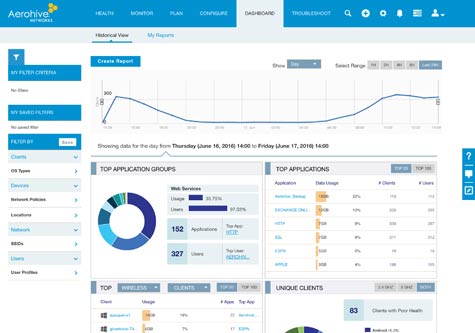Aiming to pioneer a new category of network offerings, Aerohive Networks today announced what it describes as the first software-defined local area network (SD-LAN) spanning both wired and wireless networking environments.
Milind Pansare, director of strategic marketing for Aerohive Networks, says an SD-LAN architecture being defined by Aerohive Networks manifests itself in the form of a Wave 2 802.11ac access point with software definable dual 5 GHz radios and a new release of HiveManager NG, a cloud-based platform for managing wired and wireless switches via a set of open application programming interfaces.
By definition, Pansare says an SD-LAN requires the delivery of a programmable networking environment through which both policies can be automated and traffic prioritized by application.
“We think switches at the edge of the network have been missing a critical capability,” says Pansare.
Pansare says IT organizations, for example, should be able to remotely reconfigure a wireless access point from 2.4 to 5 Ghz any time there is interference with a radio signal.
The degree to which the rest of the networking industry is going to embrace the concept of SD-LAN remains to be seen. As part of a general movement to software-defined networking and network virtualization, there are already lots of ways of making networks more programmable. But while most of those efforts today focus on networking inside the data center or on a wide area network (WAN), Aerohive Networks is making a case for applying similar concepts specifically to switches of LANs that end users employ to access applications from a variety of devices.
Regardless of the buzzwords employed, the one thing that’s for certain is that networks are getting more programmable. The path that any IT organization opts to pursue to achieve that goal will more than likely be manifold. But as part of an overall effort to make networking more agile, the shift itself is now all but inevitable.




